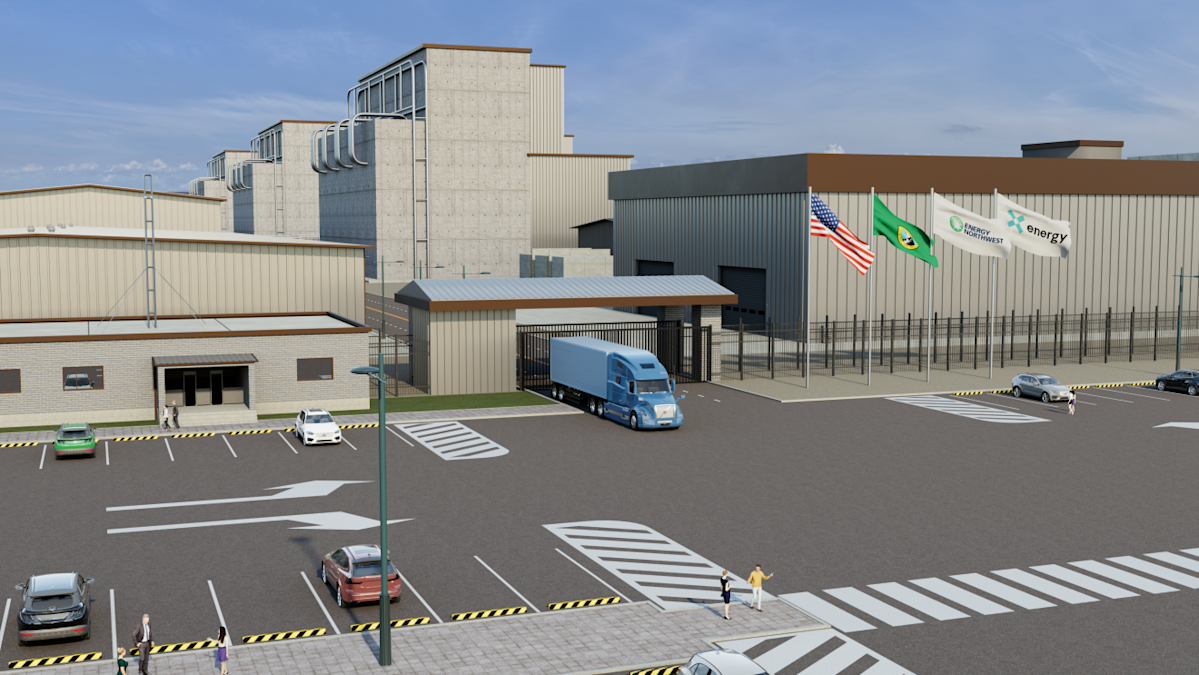Amazon Advances Small Modular Nuclear Reactor Project in Washington

Key Points
- Amazon partners with Energy Northwest and X‑energy to develop SMRs in Richland, Washington.
- The Cascade Advanced Energy Facility will start with four SMR units delivering 320 megawatts.
- The design allows expansion to twelve units, each capable of up to 960 megawatts.
- Construction is planned before the decade ends; operations are targeted for the 2030s.
- The project supports Amazon’s AI and cloud services with cleaner, reliable energy.
- Other tech giants like Google and Meta are also pursuing nuclear solutions for AI workloads.
Amazon is moving forward with a small modular reactor (SMR) project in Richland, Washington, to help power its AI and cloud services with cleaner energy. Partnering with Energy Northwest and SMR developer X-energy, the company plans to build up to twelve modular units at the Cascade Advanced Energy Facility, beginning with four that would provide 320 megawatts of power. Construction is slated to begin before the decade ends, with operations expected in the 2030s. The effort follows other tech giants’ recent forays into nuclear power for AI workloads.
Background
Amazon has highlighted the growing energy demands of its artificial intelligence (AI) and cloud computing operations, prompting the company to explore cleaner power sources. After signing agreements last year to support nuclear energy projects, Amazon disclosed details of its upcoming small modular reactor (SMR) initiative in Richland, Washington.
Project Details
The project is a collaboration between Amazon, Energy Northwest—the utilities agency for Washington state—and X‑energy, a developer of SMR technology. The plan centers on the Cascade Advanced Energy Facility, where the SMR’s compact design will occupy a smaller footprint than traditional nuclear plants while delivering up to 960 megawatts of power per unit. In its first phase, Amazon intends to help develop four SMR units, together providing an initial capacity of 320 megawatts. The facility is designed with the flexibility to expand to a total of twelve units, which would maximize the site’s energy output.
Construction of the SMR complex is expected to start sometime before the end of the decade, and the facility aims to begin operations in the 2030s. By leveraging modular nuclear technology, Amazon hopes to secure a reliable, low‑carbon energy source to sustain its rapidly expanding AI workloads and data center infrastructure.
Industry Context
Amazon is not alone among major technology companies in turning to nuclear power for AI. In October of the previous year, Google partnered with Kairos Power to develop seven SMRs across the United States. Shortly thereafter, Meta announced plans for an AI data center powered by nuclear energy, though the project encountered a delay due to the discovery of a rare bee species.
These moves reflect a broader trend of tech firms seeking to diversify their energy portfolios and mitigate the environmental impact of high‑intensity computing. Small modular reactors, with their scalable and potentially quicker deployment timelines, are emerging as a viable option for companies that require large, steady power supplies while aiming to reduce carbon emissions.